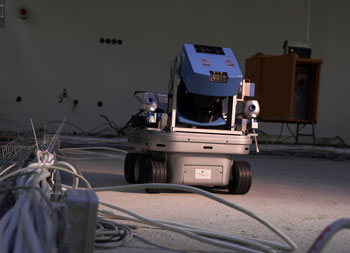Feature Article: Yoshihiro Kuroki: Dancing with Robots
THE DANCERS STAND MOTIONLESS at their positions and the room grows quiet. But as the music starts, they begin to move, bending, turning, and waving their fans gracefully as they perform a traditional Japanese dance. Yoshihiro Kuroki watches in silence, occasionally making notes. But as the dance ends, he beams with happiness. The performance has been flawless.
There have been many performances of traditional Japanese dances over the centuries, but this one is unique, because it is performed not by human dancers but by robots. And the performance takes place not in a dance studio but in a laboratory of Sony Corp.’s Entertainment Robot Co. in Shinagawa, Japan, where Kuroki is general manager. He is the mastermind behind a series of ever more capable humanoid entertainment robots, starting with the Sony Dream Robot, or SDR, in 1997, up to the current QRIO (pronounced ‘curio’) in 2003.
These delightful machines are only 58 cm tall, about the size of a newborn infant, weigh about 7 kg, and move with 38 degrees of freedom, each with its own servomotor.
QRIO’s predecessor, the SDR4X, announced in 2002, can walk, dance, sing, speak, recognize faces, and understand continuous speech. Each robot has two charge-coupled-device cameras to detect color and position and can locate a colored ball, move toward it, and kick it into a goal. It also has contact sensors in several joints to avoid pinching real human fingers. Seeing the robot perform, it is difficult to remember that there is no sentience behind those glass eyes.
Kuroki knew he wanted to work with robots ever since his second year of high school. His school was affiliated with Waseda University in Tokyo, and one day his class visited the lab of Professor Ichiro Kato.
[…]

